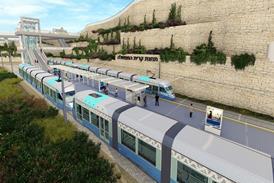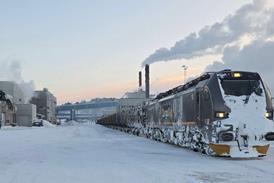PLANS TO move express freight over the French high speed network firmed up in December with the launch of a 50:50 joint venture between SNCF and La Poste.
Formed in November 2006 to conduct technical and market studies, Fret GV has now entered a project planning phase with a view to commencing operations in 2009. The intention is to use the small fleet of TGV postal sets on an expanded network - at the moment the trains run between Paris, Mâcon and Cavaillon, near Avignon, handling between 200 000 and 300 000 letters and small packages every weekday.
According to Fret GV President Marc Wautier, the service will initially be stepped up to serve terminals at Lyon and Marseille. Further expansion would see trains to Rennes, Bordeaux and maybe Toulouse, with Strasbourg and Lille identified as other possible destinations. In the meantime the market will be tested by selling space to third parties on the existing postal TGVs.
In the longer term Fret GV has tentative plans to run into Germany, Belgium, the Netherlands and the UK. This will require more rolling stock, and Wautier says two options are being considered: converting TGV Sud-Est trainsets made redundant by ongoing deliveries of TGV Duplex sets or building new trains based on standard single-deck TGVs. The TGV Duplex body structure is not suitable for freight, he says.
SNCF anticipates that Fret GV will be carrying 150 000 tonnes of high-value freight a year by 2012 - more mail and small urgent consignments such as pharmaceutical goods. According to Wautier, enough traffic exists, but the question is how much would switch modes - rail would be cheaper than air but dearer than road.
Studies are in hand to determine whether one, or possibly two, rail-air terminals should be built at Roissy-Charles de Gaulle airport, which is seen as a future hub for high speed rail cargo. A site at Goussainville to the north of the airport would be used by FedEx and airlines switching traffic to rail in standard airline containers, while a second near Tremblay-en-France on the south side would handle postal and parcels traffic in competition with the airlines.
Factors influencing the long-awaited start of cargo-carrying TGVs include Europe's rapidly expanding network of high speed lines, the rising cost of fuel for aircraft and lorries, and tougher noise legislation restricting night flights.

















